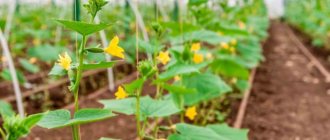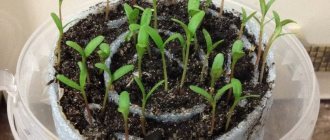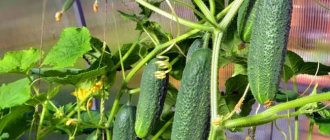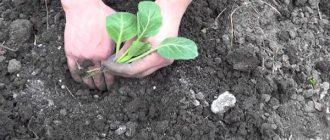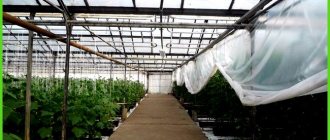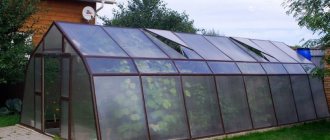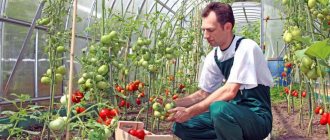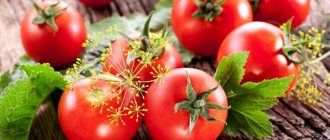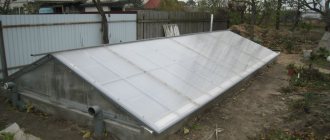Profitability on new complexes exceeds 20% "Agro-Invest"
Agroinvestor magazine
January 2018
Read issue
Growing vegetables indoors remains an attractive business for investors. And although working conditions in 2022 were not simple for market participants - competition continued to grow and product prices continued to fall, the total area of greenhouses in Russia increased, according to preliminary estimates, by 200 hectares
New projects will also be implemented in the medium term: the market still has room to develop, and besides, no segment of agribusiness receives such state support as greenhouse vegetable growing.
According to the Greenhouses of Russia association, the total area of greenhouses in the country in 2022 increased by almost 10% to 2.6 thousand hectares, and the volume of indoor production is expected to be at least 930 thousand tons. Greenhouse vegetable growing is important part of the agro-industrial complex of our country, as it provides adequate nutrition for the population during the off-season period, when most other sources of vitamins are absent, notes the organization’s general director Natalya Rogova.
There is no surplus in the country yet
The accelerated development of the industry contributes to the growth of self-sufficiency in vegetables produced in protected soil. Cucumber is the leader in the rate of increase in production and expansion of its market share. It already accounts for 66% of the total volume of greenhouse vegetables grown. The share of tomatoes is 31%, other agricultural crops are about 3%, Rogov gives figures. At the same time, according to research data, from March to October the country is now provided with its own fresh cucumbers by 90-95%, from November to February - by 50%. The remaining market share during these periods is occupied by imports. “For tomatoes, self-sufficiency is approximately half as high, and in the high winter season there is only enough supply for 20-25% of consumer demand,” says Tamara Reshetnikova, general director of Growth Technologies. For potted salads and green crops such as dill and parsley, the supply is close to 100% in those regions where there are salad greenhouses, but such products do not tolerate long-distance transportation. For other leaf and head lettuces and for herbs such as mint and rosemary, imports still predominate. During the high season, 95-100% of eggplants, peppers, zucchini, and radishes are also supplied from abroad. “However, it is worth understanding that we have a huge country, and overall (average) security does not mean real security in individual regions, especially with difficult-to-reach logistics,” the expert points out.
In general, greenhouse vegetable growing is developing in the Southern, Central and Volga districts of the country, emphasizes General Director (St. Petersburg) Andrey Golokhvastov. All announced projects are being built south of Moscow; few new large greenhouse complexes are announced beyond the Urals. “If we talk about the degree of saturation of the domestic market with greenhouse vegetables, then we can identify a number of regions that already have a surplus in cucumber,” he says. “They include Yaroslavl, Kostroma, Kursk, Kaluga, Leningrad, Novgorod, Belgorod, Lipetsk, Volgograd regions and Krasnodar region.” But there are no surplus regions for tomatoes. In total, cucumber and tomato account for over 95% of the production of greenhouse products, the expert agrees with Rogova.
In first place in terms of area occupied by greenhouses is Kuban. There are already 230 hectares in operation in the region, says Alexey Konovalov, president of the Greenhouses of the Krasnodar Territory association. Of these, 40 hectares with light culture belong to the Green Line (part of the Magnit structure; the company has a total of 83 hectares of greenhouses) and is used for growing cucumbers. In the overall structure of greenhouse vegetable production, the share of tomato in the region is about 35%, cucumber - 55%, the rest is flowers (mainly roses), salads and greens, the expert specifies.
Basically, the production of greenhouse vegetables in our country is increasing due to the commissioning of new greenhouses. However, significant volumes of vegetables and herbs are also supplied by several of the largest operating greenhouse complexes, says Reshetnikova. Among them are the agricultural complexes “Yuzhny”, “Maisky”, “Vyborzhets” and others. In the past year, perhaps only Moskovsky temporarily reduced production (from more than 25 thousand tons to 17-18 thousand tons): the company is gradually decommissioning old greenhouses.
Among the new players who contributed to the growth in the collection of greenhouse vegetables in 2022, Reshetnikova highlights two projects in the Lipetsk region: LipetskAgro and Valley of Vegetables. Their total area reaches about 40 hectares, the main part of which are fifth-generation greenhouses. “Almost the entire area is occupied by light culture of cucumbers and tomatoes, further construction is underway,” the expert knows. There are three new complexes managed by Management Company Gorkunov in the Novosibirsk region: Novosibirsk and Tolmachevsky are already operating, Obskoy is under construction. The group also includes TK Yaroslavsky in the Yaroslavl region - completely reconstructed and expanded. The total area of operating enterprises (without Obsky) exceeds 50 hectares, and more than half are under light-cultured cucumber. Using the same technology, the Churilovo agricultural complex in the Chelyabinsk region grows cucumber on 25 hectares; the company also continues to build new facilities. The greenhouses of Agro-Invest (Kaluga region, part of the Avilon automobile group) mainly specialize in growing tomatoes - 43 hectares with light culture. Eco-Culture includes three greenhouse complexes: two in the Stavropol Territory with a total area of 52 hectares and one in the Leningrad Region (“Round the Year”, 7 hectares). The company is also completing the construction of the Maryinsky plant, also in the Stavropol region. According to Reshetnikova, this year the total area of protected soil at Eco-Culture will increase by 1.5 times. New significant producers are also TyumenAgro in the Tyumen region and Lukhovitsky Vegetables in the Moscow region (together more than 25 hectares, included in the management company Greenhouse Growth Technologies), projects in the North Caucasus - Rodina (30 hectares) and YugAgroHolding "(10 hectares) and a number of others.
If we sum up the volumes of greenhouse complexes producing more than 10 thousand tons of vegetables per year, then together they produce over 415 thousand tons of vegetable products, Golokhvastov notes. And this is almost half of the total production in 2022.
1.5 million tons of greenhouse vegetables by 2022
Natalya Rogova, General Director of the Association “Greenhouses of Russia”
In the early 1990s, the area of winter greenhouses in Russia was 3.9 thousand hectares. With the transition to market relations in conditions of free pricing, a rapid increase in the cost of material and energy resources began. Prices for sold greenhouse vegetables did not have time to increase at the same pace. As a result, the majority of greenhouse complexes were liquidated. By 2006, the area of greenhouses under glass had decreased to 1.8 thousand hectares. However, since 2008, the state began to provide support to plants in the form of subsidies to reimburse part of the interest rate, and since 2015, to compensate for part of the direct costs incurred for the construction and modernization of greenhouse complexes in the amount of 20%. As a result, during the period 2014–2016, 366 hectares of new greenhouses were put into operation. According to the association, by 2022 the area of greenhouses will be 3.2 thousand hectares, in which at least 1.5 million tons of vegetables will be produced. And the provision of greenhouse products to the country’s population based on a scientifically based norm is 14 kg/person. per year - will be about 75%. Consumption of domestically produced greenhouse vegetables in previous years was 3-4 kg per person per year. In 2017, this figure will increase to 6.3 kg, and by 2020 - to 10 kg. The missing volume of vegetables will continue to be compensated by imports, but its share will be significantly reduced. Supplies have already decreased noticeably: if in 2013-2014 more than 1 million tons of tomatoes and cucumbers were imported to Russia, then in 2016 578 thousand tons were imported.
Top 35: The largest greenhouse complexes in Russia
Greenhouses November 8, 2016
Text: Anastasia Kiryanova
The Russian embargo has become an impetus for the development of domestic agriculture, which has recently demonstrated strong growth rates. Production volumes are increasing, food imports are decreasing, new enterprises are opening, and the attractiveness of many industries, including protected soil, is growing.
According to the Union of Vegetable Producers, the increase in greenhouse area last year amounted to 154 hectares, which corresponds to the same figure for 2014. That is, every year in our country new enterprises for growing vegetable products in protected soil open and begin to operate. In this regard, the editors of Agribusiness Magazine compiled their own rating of the largest operating greenhouse complexes in Russia by area. The list was compiled based on data from the Russian Greenhouses Association and Yandex.Maps. In total, at the end of 2015, there were 181 greenhouse enterprises in our country, including both recently opened ones and complexes that have existed for several decades. In total, the list included 35 companies.
LEADERS OF THE COUNTRY
At the top of the rating was the greenhouse complex of JSC Agrokombinat Yuzhny in the Karachay-Cherkess Republic, whose area is 100 hectares, and the gross harvest for the past year was 33 thousand tons. The new owner of this greenhouse complex at the beginning of summer announced the next full harvest. modernization of the enterprise, so in the future we can expect a significant increase in harvest volumes at this agricultural complex. Second place in the ranking is occupied by TK Green Line LLC (pictured) - the largest greenhouse complex in the Krasnodar Territory, owned by. The harvest volumes are quite good - 29,480 tons from 83 hectares last year, while all produced vegetable products go to retail stores in several regions of the country.
In third place is Agrokombinat Moskovsky LLC, whose gross production last year amounted to 25.4 thousand tons from an area of 58 hectares. The gap in area between the leaders is significant, however, the companies that took first and second place have similar indicators for harvesting vegetable products. The top ten ranking is completed by the enterprise State Unitary Enterprise RM “Teplichnoe” from the Republic of Mordovia, located on an area of 26.7 hectares.
HARVEST DEPOSIT
The rating included not only enterprises located in the southern regions of the country, which are characterized by warm and sunny days. Many complexes, for example, JSC Agrofirma Oldeevskaya, LLC Agrokombinat Moskovsky, SPK Voronezh Greenhouse Plant and others, are located in the Central Federal District, and some are located in the Ural Federal District and even in the Siberian Federal District. From the entire list, we can note LLC Agrocomplex "Churilovo" and LLC TC "Novosibirsky". With a smaller area compared to their predecessors in the rating, these agricultural complexes have a significantly larger volume of gross output. At the first enterprise last year, 13.1 thousand tons of vegetables were harvested from 18.5 hectares, and at the second - the same 13.1 thousand tons from 16.2 hectares, despite the fact that both complexes are located in regions with cold weather. climate. Such high indicators are due to constant work to increase productivity. The complexes have introduced the Dutch technology of growing vegetables throughout the entire area using low-volume hydroponics using light culture systems using the latest hybrids. At the same time, the period of cultivation of vegetable products is almost year-round. Both enterprises have their own gas piston units, providing greenhouse units with uninterrupted heat and electricity all year round. It is precisely such decisions in the greenhouse business that guarantee high yields, and not large areas, the location of the complex and the climatic conditions of the region. Many greenhouse complexes in the country, especially those that have been operating for a long time, are gradually switching to such technologies, so in the future we can expect a significant increase in the production of greenhouse vegetable products in our country.
Table 1. The largest greenhouse enterprises in Russia by area
| No. | Greenhouse enterprise | Region of location | Area, ha | Gross production for 2015, tons |
| 1 | CJSC "Agrokombinat "Yuzhny"" | Karachay-Cherkess Republic | 100 | 33000 |
| 2 | LLC TK "Green Line" | Krasnodar region | 83 | 29480 |
| 3 | LLC "Agrokombinat "Moskovsky"" | Moscow region | 58 | 25400 |
| 4 | LLC Greenhouse plant "Maysky" | Republic of Tatarstan | 42 | 35000 |
| 5 | State Unitary Enterprise "State Farm Alekseevsky" | Republic of Bashkortostan | 38,5 | 36000 |
| 6 | LLC "Vegetables of the Krasnodar Territory" | Krasnodar region | 32 | 13100 |
| 7 | PJSC Agricultural Plant "Teplichny" | Krasnodar region | 30,5 | 11100 |
| 8 | SEC "Voronezh Greenhouse Plant" | Voronezh region | 30 | 10800 |
| 9 | JSC "Teplichnoe" | Ulyanovsk region | 26,9 | 11500 |
| 10 | State Unitary Enterprise RM "Teplichnoe" | The Republic of Mordovia | 26,7 | 13900 |
| 11 | JSC "Industrial" | Altai region | 26,7 | 8800 |
| 12 | CJSC "Agrofirm "Oldeevskaya"" | Chuvash Republic | 26 | 10100 |
| 13 | JSC AF "Vyborzhets" | Leningrad region | 24,9 | 15100 |
| 14 | OJSC "Sovkhoz-Vesna" | Saratov region | 24,7 | 15400 |
| 15 | LLC "Agrocomplex Volzhsky" | Volgograd region | 24,1 | 8700 |
| 16 | LLC "TK LipetskAgro" | Lipetsk region | 24 | 10900 |
| 17 | JSC "Penza Greenhouse Plant" | Penza region | 22 | 7600 |
| 18 | LLC "Vegetables of the Stavropol Territory" | Stavropol region | 21,3 | 3200 |
| 19 | JSC "Teplichnoe" | Sverdlovsk region | 21 | 4600 |
| 20 | OJSC "Agrokom" | Kabardino-Balkarian Republic | 20 | 6800 |
| 21 | LLC "Agro-Invest" | Kaluga region | 20 | 8400 |
| 22 | LLC SHP "Greenhouses of Belogorya" | Belgorod region | 18,92 | 8300 |
| 23 | LLC "Ovoshchevod" | Volgograd region | 18,6 | 6700 |
| 24 | LLC Agrocomplex "Churilovo" | Chelyabinsk region | 18,5 | 13100 |
| 25 | CJSC "Plemzavod Razumensky" | Belgorod region | 18,5 | 9600 |
| 26 | SPK AF "Culture" | Bryansk region | 18 | 6900 |
| 27 | OJSC "TC Progress" | Krasnodar region | 18 | 6000 |
| 28 | JSC "Nezhinskoye" | Stavropol region | 17,84 | 4500 |
| 29 | State Unitary Enterprise VOSHP "Zarya" | Volgograd region | 17 | 6300 |
| 30 | LLC TK "Rostovsky" | Rostov region | 16,6 | 6690 |
| 31 | LLC "Krymteplitsa" | Republic of Crimea | 16,4 | 4700 |
| 32 | LLC TK "Novosibirsky" | Novosibirsk region | 16,2 | 13100 |
| 33 | LLC "Greenhouse Plant "TyumenAgro"" | Tyumen region | 16 | 7300 |
| 34 | OJSC "Agricultural complex "Gorkovsky"" | Nizhny Novgorod Region | 16 | 5700 |
| 35 | Trubichino LLC | Novgorod region | 15,1 | 5200 |
Source: Association "Greenhouses of Russia", "Yandex.Maps"
Share
Tomato at the peak of popularity
Greenhouse vegetable producers themselves also talk about increased production. For the Eco-Culture Agricultural Holding, 2022 was an effective year, states the company’s general director, Konstantin Roslyakov. “We almost doubled the volume of vegetables to 40 thousand tons, and the area of greenhouses to 132.21 hectares, which is 2.5 times more than a year earlier,” he says. “We have expanded our production boundaries, and now, in addition to the Stavropol Territory, we have greenhouse complexes in the Leningrad and Lipetsk regions, and opened a distribution center in St. Petersburg, which allows us to significantly reduce our logistics leverage.” Eco-Culture is expanding its space by acquiring existing enterprises and creating new ones. In the past year alone, the company invested 19.6 billion rubles in the construction of 73.4 hectares, the top manager notes. “Of course, such results in the current economic conditions would hardly be possible without the support of financial institutions and local authorities,” he points out. “Russian Agricultural Bank has become our main partner this year.”
At the beginning of its work, the agricultural holding relied on tomatoes, since this niche was not filled. But gradually, developing and gaining experience, the company’s specialists expanded the range: now it includes cucumbers and fresh salad. The varietal composition of tomatoes has also increased - to more than 12 items. “We recently began to master the cultivation of eggplants and peppers,” shares Roslyakov. “Light culture now accounts for half of the production space.”
The Agro-Invest greenhouse complex also specializes in tomatoes; it already produces about 25 different varieties. “Our flagships are a medium-sized tomato on the Victory branch, cherry tomatoes on the A-More branch and Dolce Vita,” lists company representative Oleg Vlasov. “In 2022, we introduced a cocktail cherry tomato (which is slightly larger than usual) and a pear-shaped variety to the market.” At the end of the past year, Agro-Invest produced more than 20 thousand tons of tomatoes alone, and the area of greenhouses increased to 68.5 hectares.
“Vegetables of the Krasnodar Territory” also grows only tomatoes. In 2017, its production increased by 4 thousand tons to 12 thousand tons. “We didn’t increase the capacity, we just changed the crop rotation structure,” explains the company’s financial director, Alexey Konovalov. “In the coming year we expect to receive 14 thousand tons.” The area of the company's greenhouses is 32 hectares without photoculture.
TC Seim Agro (Kursk region) produces mainly cucumbers (6 hectares) and some tomatoes (0.65 hectares). The productivity of the former last year was 48.3 kg/m², of the latter - 56 kg/m². “We grow cucumbers in two rotations: one sowing is carried out until mid-December, and we receive products from the end of January to the beginning of July; these hybrids are pollinated by bees. The second sowing takes place in July, and the harvest is from August to November 10-15; self-pollinating hybrids are used,” says Konstantin Ilyin, deputy general director of the greenhouse plant. “Tomatoes are produced in an extended rotation: we sow in December and harvest from late March to mid-November.” Although the enterprise is small and there is almost no free space, the company is trying to conduct experiments for the future: it is trying to grow eggplant and zucchini in small quantities.
Tomatoes will be grafted
According to Sergei Nesterov from Rijk Zwaan, last year modern agricultural practices began to be used more often in greenhouse production. In particular, tomato grafting, which allows you to combine wild and cultivated varieties into one stem. This allows you to extend the growing season of the crop and ensures the plant’s resistance to stress in the summer. In Europe, tomato grafting is already used on 90% of the area; in Russia, this method is still considered a new trend and is used on no more than 1% of the total area of greenhouse tomatoes.
TOP 5 most notable greenhouse projects in the South
Volzhsky "Vegetable Grower": many billions to "Botany"
In 2022, it expanded the area of the greenhouse complex operating in the Volgograd region and began construction of a new shopping center for tomatoes. Yuri Sudarev, told Expert YUG they first completed the fourth stage of the existing complex, where Ovoshchevod grows cucumbers all year round. As a result, the complex increased from 20 hectares to 30 hectares. Then the investor began construction of a new greenhouse complex. “The project passed a competitive selection process at the Ministry of Agriculture of the Russian Federation,” noted Sudarev. “We will start construction in 2022 and finish it by the end of 2019.”
According to the head of the company, the area of the new complex will be 25 hectares, and it will also operate year-round. The project provides for the construction of a logistics center of 12 thousand square meters. meters and electrical substations. “The implementation of this project will allow us to produce 18 thousand tons of tomatoes per year,” Yuri Sudarev specified. According to the company’s development strategy, by 2022, the total investment in the production of vegetables “on protected soil” will amount to 25 billion rubles, and the total capacity of the two complexes will exceed 30 thousand tons of cucumbers and 33 thousand tons of tomatoes per year (taking into account new projects implemented by the owner the company plans after 2022).
According to Sudarev’s estimates, the total investment in the project for the construction of greenhouses for tomatoes alone will exceed 6 billion rubles, 80% of which is a bank loan at a preferential rate (as part of the federal program for supporting agricultural enterprises), and 20% is own funds. The financial partner of the company is VTB Bank. The general director of Ovoshchevod hopes to recoup the investment in eight years.
Ovoshchevod LLC is located in the city of Volzhsky. Yuri Sudarev bought the greenhouse farm in April 2004. The once large state farm, the second largest in terms of supplies to the USSR, was on the verge of bankruptcy. In the first 10 years, the investor invested more than 1 billion rubles in the development of the economy, 750 million of which was a bank loan. The company paid off the debt, modernized the old 10.2 hectares of greenhouses, replaced 80% of outdated technologies, built 10.5 hectares of modern greenhouses and its own boiler house. Since 2014, the owner of the company has been implementing a project to develop a modern greenhouse complex, which produces and sells cucumbers online all year round. At the end of 2017, more than 13 thousand tons of vegetables were grown here. By the end of 2022, Ovoshchevod has commissioned another 10 hectares of this complex, increasing its area to 30 hectares. Production volume increased to 21 thousand tons of vegetables.
Kuban "Magnit": continuation of the green line of Sergei Galitsky
PJSC Magnit is building a greenhouse complex for growing tomatoes in the Tikhoretsky district of the Krasnodar Territory, the company’s press service told Expert YUG in August 2022. The talk was about creating production on an area of about 60 hectares. According to the district administration, investments in the first phase of the project will amount to 12.6 billion rubles, construction will be completed by the end of 2022.
Research Director General Tamara Reshetnikova considers the greenhouse experience of Magnit PJSC successful, and its intentions justified and logical. “Seven years ago, the company’s owners set a goal to provide the chain’s stores with their own greenhouse products. For this purpose, 83 hectares of greenhouses were built in several stages,” the expert recalled. — In terms of the number of areas, the Green Line shopping center owned by Magnit is among the top five in Russia. The complex uses modern agricultural technologies and equipment. The company's vegetable greenhouses mainly grow cucumbers, which occupy approximately three-quarters of the area. According to our estimates, the agricultural complex supplies the related federal chain with fresh cucumbers by 50-55 percent, which is a high figure, considering the number of Magnit supermarkets and the territorial coverage of the chain.”
According to the expert, the retailer has fulfilled the task of providing stores with its own cucumbers. Now it’s the turn of tomatoes, which began to be grown in Magnit’s greenhouses last year, but in more modest volumes. “The share of own tomatoes on the chain’s shelves now barely reaches 15 percent. To increase this share to 55 percent, the retailer will have to introduce not 60 hectares of new greenhouses, but much more, since the 35-40 thousand tons of tomatoes obtained from the new areas will not be enough to cover the needs of the federal network,” Reshetnikova is sure.
According to the general director of the analytical agency INFOline Ivan Fedyakov , the announced project, first of all, shows that the new Magnit team, which came here in May 2018, decided not to abandon the strategy of the company founder Sergei Galitsky . “It's quite interesting. After Galitsky sold a controlling stake in the company, the question arose about how the direction of its own production would develop, since in these processes the influence of the founder of the network was key. Moreover, some of the production facilities that work for Magnit are still the private property of Galitsky,” explains the expert.
"Donskaya Usadba": local gas for its cucumbers
In the Rostov region, the largest producer of vegetables on protected soil is the Donskaya Usadba TC, which is developed by LLC UK TTR from St. Petersburg. The investor launched the first stage of the complex on an area of over 14.5 hectares in the Tarasovsky district in September 2022. One of the advantages of the project is that for heating and lighting the greenhouses, gas from a local deposit is used, which is much cheaper than the fuel supplied through Gazprom. According to the Minister of Agriculture of the region Konstantin Rachalovsky , its own gas will allow LLC UK TTR to save on costs and supply fresh vegetables to retail chains at prices lower than those of its competitors.
The general director of the company, Sergei Rukin (pictured in the center), noted that the launch of Donskoy Usadba is an important part of their global strategy. “This (so far) is the most modern and equipped of our complexes,” the top manager emphasized. — We launched the first stage with a capacity of 11 thousand tons of vegetables per year. By 2022, they intend to launch the second phase of the project and increase the area of greenhouses to 19.8 hectares. The design capacity of the complex should be 14 thousand tons.” In 2022, the volume of investments in Donskaya Usadba amounted to 4.2 billion rubles. The investment structure includes both own and borrowed funds (loan from Rosselkhozbank). According to Mr. Rukin, the total investment in both stages will amount to 5 billion rubles, which the company’s management hopes to recoup in seven years.
“Donskaya Usadba” is a year-round complex for growing cucumbers and tomatoes: 8.5 thousand tons per year and 2.5 thousand tons per year, respectively. Natalya Fedoseeva, marketing director of LLC Management Company Greenhouse Growth Technologies .
As part of supporting this investment project, the regional and municipal authorities built a road more than 11 km long. Over 203 million rubles were invested in the construction - 200.1 million from the regional budget, the rest from the district budget. “Where new production is located, the region undertakes to provide such enterprises with engineering and road infrastructure. When the investor came here, there was complete impassability,” explained Don Governor Vasily Golubev . He added that depending on the needs of the local market for greenhouse vegetables, the assortment of Donskoy Usadba can be expanded.
In addition to the greenhouses themselves, engineering infrastructure has been created on the territory of the complex. For example, a gas piston station, which will use local gas to produce heat and electricity. By the way, according to the Investment Development Agency of the Rostov Region, in the Tarasovsky region there are two oil fields with a reserve of more than 3.4 thousand tons and eight natural gas fields (over 18.9 billion cubic meters). Gas is supplied to the greenhouse complex from the Ternovskoye field (subsoil user - TC Donskaya Usadba).
“ECO-culture”: a sunny gift to our native Stavropol
In November 2022, one of Russia’s largest producers of greenhouse vegetables, ECO-culture, began construction of the third and fourth stages of the Solnechny Dar complex in the Stavropol Territory. On an area of 58.7 hectares, the investor will build modern year-round greenhouses with a capacity of more than 35 thousand tons of tomatoes per year. This is 50% of the total volume of vegetables that are currently grown in the region on protected soil
The press service of the agro-industrial holding ECO-Culture informed Expert YUG about the laying of new stages of the Solnechny Dar complex in the Izobilnensky urban district of the Stavropol Territory. It was clarified here that the new year-round greenhouses are located in the village of Solnechnodolsk, on the territory of the Solnechny Regional Industrial Park, where in 2022 the company launched the first stage of a greenhouse complex with an area of 25.2 hectares. “Now the first harvest is being completed and a new one is being planted. 12.7 thousand tons of tomatoes and cucumbers have already been produced. The second phase with an area of 32 hectares is planned for commissioning this year,” the press service said.
Now, on an area of 58.72 hectares, the investor will create a modern high-tech production of tomatoes of various varieties. Reaching design capacity is scheduled for the end of 2022. “Investments in the construction of the third and fourth stages will amount to more than 15 billion rubles. The financial partner of the project is JSC Rosselkhozbank,” according to the website of the Agricultural Holding ECO-Culture. The press release clarifies that not only borrowed funds, but also the investor’s own funds are used to implement the project. Thus, the total volume of capital investments in the third phase will exceed 7.4 billion rubles, of which slightly more than 5.8 billion is a preferential loan from the bank, and over 1.6 billion is funds from the agricultural holding. The commissioning of this line on an area of 26 hectares is planned for the third quarter of 2022. 14 thousand tons of tomatoes will be grown here annually. The situation is approximately similar for the fourth stage of the Solnechny Dar shopping center: “the total capital investment budget” will be 8 billion rubles; 6.4 billion of them are the bank’s funds, and 1.6 billion rubles are the investor’s money. At the same time, both the area and capacity of greenhouses will be even larger: 32.67 hectares and 21.2 thousand tons of tomatoes per year.
Alexander Rudakov, president of the ECO-Culture Agricultural Holding (quoted from the bank’s press release). “Currently, (our) projects are present throughout the country, but we will strive to “return home” to the Stavropol region, and with the help of the Russian Agricultural Bank, invest more and more funds in the development of the region’s economy.”
Tomatoes grown in the Solnechny Dar shopping center will be supplied to the stores of the X5 Retail Group (which manages the Pyaterochka, Perekrestok and Karusel chains), as well as to supermarkets and hypermarkets. Magnit", "Lenta", "Okay", "Dixie", "Azbuka Vkusa" and other retail outlets with which reliable business ties have been established since 2022. In total there are about 20 companies in the Central, Southern, North Caucasus and Northwestern districts of the country. In addition, ECO-culture cucumbers and tomatoes are purchased by the fast food chain McDonald's.
Tomatoes in Dagestan will be grown in Azerbaijani style
is completing the construction of a modern greenhouse plant in Dagestan with a capacity of 3.5 thousand tons of tomatoes per year and an area of 20 hectares, for the development of which Russian and Azerbaijani investors have already allocated 1.3 billion rubles. Expert YUG was informed about this by the press service of the republican government. “Earth work, drainage of communications, clearing of the site for construction have already been completed, technical and administrative buildings have been erected. Both European and Russian technologies and equipment are used,” the press service clarified. They added that investors plan to launch the greenhouse complex in February 2019, and receive the first harvest in May. 150 people will work here, 85% of them are local specialists.
“Our goal is to implement the project in the shortest possible time with maximum efficiency,” the government press service quotes Sadig Rza Ismail oglu , head of the supervisory board of Bank BTB (Azerbaijan), representing the investor’s side. “(The success of this complex) may serve as a reason for investing our capital in other projects in Dagestan.”
According to the banker, the average salary in a trading company will be 30 thousand rubles per month, annual contributions to budgets of all levels - 33.2 million rubles per year, “with an enterprise turnover of more than 230 million rubles per year.”
According to the Seldon.Basis information system, Khazar-18 LLC was created on October 11, 2022 in the village of Salik, Derbent district of the Republic of Dagestan. The main specialization is the cultivation of vegetables, melons, root and tuber crops, mushrooms and truffles. The general director of the company: Magomedali Babaev , is also its co-founder. The remaining 50% of the enterprise belongs to entrepreneur Elchin Gumat Ogly Akhmedov . The certificate about Khazar-18 LLC also states that it is joint private and foreign property.
According to the Ministry of Agriculture of Dagestan, the investor of the plant in the village of Salik has sufficient experience in implementing similar projects. Thus, earlier in Azerbaijan he launched a greenhouse complex on an area of 13 hectares. The plant in the Derbent region (20 hectares) will become one of the largest in Dagestan, where the total area of modern greenhouses is now 219.4 hectares. Thus, the launch of the Khazar-18 LLC project alone will increase the greenhouse area of the region by almost 10%.
According to Tamara Reshetnikova, large greenhouse projects, as a rule, are started in the hope of serious government support, which, in particular, involves preferential lending and the provision of subsidies to investors in the amount of 20% of the estimated cost of the facility (CAPEX return). “As for loans at 5 percent per annum, for now this benefit remains and project initiators will be able to receive funds on such terms in 2019 if they submit the necessary documents to the Russian Ministry of Agriculture on time,” the expert is sure. “It’s more difficult with the return of CAPEX: according to our information, the Ministry of Agriculture of the Russian Federation is already preparing draft documents on a possible reduction in such support for 2022 and is even considering the option of completely refusing to compensate costs for new greenhouse investors whose construction plans begin after 2020-2021.”
Reshetnikova is sure that three years ago such a measure was introduced to stimulate the development of greenhouse vegetable growing. This helped, the general director believes, and now “the government authorities want to apply a similar mechanism to support other sectors of the agro-industrial complex, for example, storage of agricultural products and/or their deep processing.”
Costs and profits
Last year, the greenhouse industry remained one of the most profitable segments of the agricultural sector. Profitability indicators, as Rogova notes, largely depend on yield, and it has increased significantly since the early 2000s. “The construction of new greenhouses and the introduction of modern technologies in them made it possible to increase the average yield of vegetables in closed ground from 15-18 kg/m2 in 1990 to 36 kg/m2 in 2016,” she cites the figures. “In greenhouse complexes using light culture technologies, more than 120 kg/m2 of cucumbers are obtained, and more than 80 kg/m2 of tomatoes.” However, unfortunately, the selling price does not increase in proportion to the cost of energy resources, which increased 13-17 times from 2000 to 2015. Prices for vegetables during this period increased only five to six times. In general, the expert notes, production profitability at new complexes reaches 20% or higher.
At Eco-Culture, the EBITDA profitability of growing tomatoes in 2017 was about 35-40%, cucumbers - 25%, shares Roslyakov. At the same time, the cost of tomato production, including commercial expenses, averages 50-52 rubles/kg, or 3.5 thousand rubles/m2. “Costs have increased slightly this year, but this is due to an increase in the share of light culture,” explains the top manager. “The cost of a cucumber per square meter is approximately 5.5 thousand rubles.” Marketing plays a big role in the sector's profitability, he adds. The greatest profit can be obtained from the sale of packaged products.
Agro-Invest estimates production profitability at 15% to 25%. “Investments in the project amount to 13 billion rubles, and the planned payback period is eight years,” shares Vlasov. In 2017, according to him, tomatoes had priority in terms of profitability.
The crop turnover at Seim-Agro is distributed in such a way that the enterprise receives maximum profit, says Ilyin. “That’s why we grow cucumbers on a significant part of the area: they are cheaper to produce and the return is faster,” he explains. “Their selling price varies from 40 rubles/kg to 250 rubles/kg, for tomatoes it’s about the same, depending on the season.” However, it is not recommended to transport cucumber further than 700 km without additional processing. Tomatoes withstand travel better and store better, but their market is more affected by import competition.
Many factors affect profitability, Konovalov comments. The construction of one hectare of greenhouse complex costs from 100 million rubles. up to 150 million rubles, using light culture - from 180 million rubles. up to 230 million rubles. “Since we get results per square meter and incur costs per square meter, everything depends on the yield,” he says. — In 2016, we had a very low collection rate - 42-43 kg/m2, we worked to zero. In 2017, the yield increased to 46 kg/m2, and we gained profit, even though the price of tomatoes decreased from 60 rubles/kg to 57-58 rubles/kg compared to last year.” The cost of their production in summer ranges from 40-42 rubles/kg, and in winter (when using light culture) it ranges from 55-60 rubles/kg.
Another important point that affects production costs and profitability is the use of technology, continues Konovalov. In the Krasnodar Territory there is still a very low level of use of light culture due to the fact that the region is highly energy dependent - there is no free capacity, and those that exist are very expensive, oh. That is why in the region only those plants that have their own energy use light culture. In particular, the Green Line, which uses gas-piston power plants. “Vegetables of the Krasnodar Territory” also has such installations at a flower plant in the village of Yaroslavskaya. The cost of generating such electricity based on direct costs is 2.4-2.8 rubles/1 kW, Konovalov reports.
“Made with us” and on Yandex.Zen
© ic.pics.livejournal.com
Despite the significant increase in the area of greenhouses in Russia and their renovation. On average, the commissioning of new greenhouses is 300 hectares per year and the withdrawal of old greenhouses is 100 hectares. The area of closed ground in Russia is still relatively small, about 4000-4500 hectares of greenhouses and greenhouses in 2021, according to various sources. This number looks quite small at first glance. Someone remembers the RSFSR, where in the mid-1970s the total area of greenhouses was 4.7 thousand hectares. Some cite other countries, for example Spain with 47,000 hectares of closed soil.
Mediterranean greenhouse map 2022
© ic.pics.livejournal.com
In 2022, there were 500 thousand hectares of greenhouses in the world, not counting China with its 2.7 million hectares of greenhouses. According to experts, by 2022 the area of greenhouses in the world will grow by 11% per year and reach 750 thousand hectares. Europe is the world leader in greenhouse area. There are 210 thousand hectares of them in Europe, which is 42.2%. In second place is Asia, excluding China (180.5 thousand hectares, 36.3%). Next, by a large margin, are Africa (45.3 thousand hectares, 9.1%), North America (31.8 thousand). ha, 6.4%), Middle East (14.6 thousand ha, 2.9%), South America (14 thousand ha, 2.8%) and Oceania (1.6 thousand ha, 0.3 %).
Against this background, Russia, even with 4,500 hectares, 1% of the world, without China, looks rather inconspicuous. Why, in numbers Russia looks especially terrible, especially when comparing hectares per million people.
© ic.pics.livejournal.com
In fact, this is not true. Only very narrow-minded people can directly compare the area of greenhouses, putting them under the same umbrella: a frame over the beds covered with polyethylene and a year-round 5th generation greenhouse costing 300 million rubles per hectare.
Russian greenhouses compared to the average world or Soviet ones are like supercomputers compared to personal computers. A greenhouse in Russia must operate all year round, even at minus 30 degrees. Apart from northern Europe, there are almost no such greenhouses in Europe. All greenhouses in the European Mediterranean are 2-3 generation greenhouses. The old Soviet greenhouses were also no more than 3 generations old. They cannot be called greenhouses; they are not year-round. According to the current classification, these are spring greenhouses and greenhouses. Real winter greenhouses in Russia appeared with the advent of the 4th generation and the 5th generation, which appeared in 2006. And 20% of the world's greenhouses, the most recent 5th generation, are located in Russia. Russia does not build winter greenhouses below the 4th generation due to the climate; all generations below are not profitable in Russia. And it turns out that while the rest of the world is vegetating in the 20th century of hothouse evolution. Russian greenhouses have burst into the next 21st century. Moreover, the 6th generation of greenhouses is approaching.
Yes, the rest of the world can also build greenhouses of the 21st century. But they consume a lot of energy and at current gas prices they can only be profitable in Russia. And in this Russia has a chance to conquer the whole world.
A short excursion into the evolution of greenhouses in Russia.
First generation greenhouses
The first large greenhouse farm in Russia appeared in the Klin district of the Moscow region in the mid-19th century. Industrial production of glass roofs for greenhouses was organized here. The walls were made of logs, the height of the northern wall was about 2.5 m, the stove was placed every 7 meters. Smoke ducts were laid underground around the greenhouse and in the back wall, thus it was possible to heat not only the air, but also the soil. The Klin greenhouse was the first generation of winter greenhouses.
© ic.pics.livejournal.com
© ic.pics.livejournal.com
In greenhouses they not only grew vegetables, but also carried out breeding work; at the end of the 19th century, the first Russian greenhouse varieties of cucumbers and tomatoes appeared. The first generation greenhouses required only manual operation, had poor ventilation and unstable air temperature. Revolutionary events destroyed the nascent greenhouse industry in Russia, the royal greenhouses and greenhouses of the nobles were destroyed, and the economy of the Klin district disappeared.
As with everything, progress in Russia stopped for 20 years.
Greenhouses of the second generation.
At the beginning of the 20th century, greenhouses with two glazed surfaces - gable ones - appeared in Russia. Their area reached 300 m2, which was 3-4 times larger than that of traditional “Klin greenhouses”. They appeared in the USSR only in 1937
© ic.pics.livejournal.com
From the Album of projects used in agricultural construction (1937). Heating ceases to be stove heating; farms begin to use steam boilers, electric heaters, thermal waste from enterprises or central water heating. For each greenhouse, engineers select the most suitable heating method. Construction is being carried out according to standard designs developed for different climatic zones of NIIOH (Research Institute of Vegetable Farming).
In 1913, the area of greenhouses in Russia was about 4 hectares, by the end of 1939 it was already 82 hectares. During the Great Patriotic War, there was no time for greenhouses, many of them were completely destroyed, but already in the 1950s, mass construction of protected ground facilities began again. The second generation of greenhouses is usually classified as non-automated glass structures with water heating, colossal energy costs and low productivity.
Vorkuta 1958
© ic.pics.livejournal.com
In the second half of the 20th century, technologies in the chemical industry developed rapidly, new covering materials appeared, greenhouse designs were improved, and the second generation was replaced by the third.
Third generation greenhouses
The heyday of this technology occurred in the 60-70s. Greenhouses of the 3rd generation are hangar greenhouses with central water or electric heating and large areas - from 600 square meters. The frame of the building was made of metal and the roof was glass. These structures were designed without internal support posts, so for the first time in the history of greenhouse farming, farmers had the opportunity to use tractors. The share of manual labor was still large, but mechanization and automation of production processes had already begun. Greenhouse in 1961, based on materials from LIFE magazine. Compared to the previous generation of greenhouses, there was better lighting and ventilation, but higher construction and heating costs.
© ic.pics.livejournal.com
The third generation multiplied the size of the second generation of greenhouses by combining large block structures under one roof. Water heating in such bulky structures heats the air extremely unevenly and makes it practically impossible to maintain an optimal microclimate. Greenhouse 1974. Hot water is supplied to the pipes from which the frame is assembled.
© ic.pics.livejournal.com
At that time, greenhouses were being built at an accelerated pace; cheap fuel made it possible to build them even beyond the Arctic Circle. Technologies for automatic microclimate control were improved, and new plant varieties were developed specifically for protected soil. Most of the 3rd generation greenhouses were destroyed in the 90s.
Fourth generation greenhouses
In the fourth generation, greenhouses took on the appearance of tall structures with automated control using microcontrollers. Excess heat in such structures escapes through side glazing and roof vents. This allows you to maintain a microclimate quite favorable for plants in the autumn-winter period. However, in spring and summer this becomes difficult to do. Problems of 4th generation greenhouses: Increased CO2 consumption, increased water consumption, increased heat and electricity consumption. Biological vulnerability, pests, spores, fungi enter the greenhouse through the transoms. Poor lighting, natural light in the greenhouse is reduced due to the large number of transoms. Temperature shock, the temperature is unevenly distributed in the greenhouse, so there is a risk of plant hypothermia.
For example, the newest greenhouse in Kazakhstan is 4th generation.
© ic.pics.livejournal.com
Fifth generation greenhouses.
These are greenhouses with Ultra CLIMA technology. The greenhouse maintains an ideal microclimate at any time of the year. A greenhouse allows you to save heating costs. The greenhouse can maintain an optimal level of CO2 at any time. The greenhouse is protected from pests. There is no stagnation of air in the Ultra Clima greenhouse, which prevents the development of diseases, thanks to film sleeves located under each bed. Video of how the fifth generation works, with a short recap of the history of previous generations.
©Video from / https://www.youtube.com/embed/RV2QZsAgxxQ
Example
. Greenhouse plant "Eletsk vegetables"
© dobvesti.ru
Sixth generation greenhouses.
The sixth generation is still being formalized and has not received the proper framework. Most likely it will include the mandatory use of ultraclimate technology, hydroponics, aquaponics and LED lighting. And the most important thing is the complete elimination of dependence on sunlight, and in addition the combination either with vertically moving elements or a multi-layered height arrangement. Something like the world’s largest greenhouse, for its class, the urban vertical farm “RusEco”, which recently opened in Moscow. The farm is 7 hectares, on an area of 0.5 hectares. Costing 5 billion rubles and producing 25-50 tons of greenery per day. Personally, it is already difficult for me to classify such a farm as an area of closed ground. There is no ground there either.
© greentalk.ru
A complete rejection of the sun, of which there is very little in Russia, will lead to a dependence of the number of greenhouses on the cheapness of energy.
What has already led to the increase in the number of greenhouses, the new 21st century, in Russia. More on this in the next post.
New trends
One of the trends in 2022 is the consolidation of announced projects and their scaling in several areas at once with an eye to sales in regional markets. “New investors, having launched their first projects and received decent results, decided to expand their business: invest in the construction of new facilities, as well as buy existing or unfinished plants,” says Tamara Reshetnikova. Another important area that producers of greenhouse vegetables began to actively develop in the past year is the organization of their own trading houses and distribution centers, says the expert.
In addition, since the cucumber market is becoming increasingly saturated, since last year investors began to pay more attention to tomato production, Reshetnikova emphasizes. Specialist in protected soil crops (engaged in vegetable breeding) Sergei Nesterov confirms that with continued demand for cucumber seeds, sales of tomato seeds have begun to increase. “Moreover, in addition to the traditional choice beef tomato for Russia, enterprises have become interested in medium-fruited varieties, both cluster and individually harvested, and large producers of special tomatoes, such as cherry, plum, and cocktail tomatoes, are appearing,” he shares. “There is also growing interest in the line of pink tomatoes.” The company is creating an assortment suitable for growing in highly professional illuminated soil, Nesterov draws attention. Previously, most of the hybrids offered to the market were mainly from the film segment, which are difficult to grow in light culture.
There are also changes in the demand for cucumber varieties. The market for medium-fruited smooth cucumbers is quite large; producers switched to it two years ago, and now they have begun to return to the production of long-fruited varieties, says Nesterov. “Since the market is already large, companies began to wonder what other types of cucumbers could be grown in light culture,” he says. “Therefore, the short-fruited tuberculate cucumber with a length of 6 cm to 13 cm, well suited for growing under artificial lighting, is interesting.” In 2022, there was also an increase in demand for eggplant seeds for production in light culture: several players began to grow it year-round with a fruiting period from autumn to January-February. “This year we will already see their first products,” the specialist is sure.
Golokhvastov lists the main trends of this year as the introduction of capacity in bursts, as well as the use of electric supplementary lighting. If earlier projects, especially on tomatoes, were built without light culture, now everything is done only with it, he claims.
Production will increase
According to the forecast of Greenhouses of Russia, taking into account the commissioning of new complexes, the production volume of greenhouse vegetables in 2022 could reach 1.15 million tons. State subsidies for obtaining 5% preferential loans and hopes for the return of CAPEX, according to Reshetnikova, will continue to be an excellent incentive to increase production. “This year we will see further consolidation of the industry and the scaling of successful projects with the pooling of capital and management potential,” she said. “The professional approach to planning and managing the activities of greenhouse complexes will increase, new trading houses and ORCs will appear as part of large and medium-sized holdings.” The main locations for new large projects will be the North Caucasus and the Southern Federal District, located in six to seven light zones, as well as the Central Federal District and the Moscow region as regions with the highest market capacity. Greenhouses of small and medium size will be built in the so far undeveloped regions of the North-West, Volga region, Urals, Siberia and the Far East, the expert believes.
In addition to increasing investment in tomato production, Andrei Golokhvastov also expects increased investment in the cultivation of eggplant and sweet peppers. Although for now they will be produced in noticeably smaller volumes than cucumbers and tomatoes.
Eco-Culture’s plans for 2022 include further development of projects in the Stavropol Territory, Lipetsk and Leningrad regions. “We are starting the construction of greenhouse complexes in the Tula, Voronezh regions, and Krasnoyarsk Territory,” shares Roslyakov. “Loan agreements have already been signed with our financial partners on four investment projects, the total amount of capital investments will be 29.5 billion rubles.” In addition, in the future the company intends to develop the production of open-ground vegetables.
Agro-Invest expects to increase the area of greenhouses. By the end of this year, they should already amount to 112.5 hectares. The construction of the third stage of the plant on 3.2 hectares is planned by Seim Agro. Investments could amount to about 300 million rubles. “We already have a project that has passed the state examination, and a construction permit has been received. Now we are resolving the issue of financing,” says Konstantin Ilyin. Despite government support, banks are reluctant to lend, making impossible demands, he admits. According to Golokhvastov, despite the lively investment situation in the industry, this year the market will also see the cancellation or indefinite postponement of planned projects, precisely because of the unclear situation with support.
